When you think about creatures that live a long time, you might picture old tortoises slowly ambling across their habitats or giant trees standing tall for centuries. But there’s a whole world of animals that beat the clock in the longevity game, many of which you might not expect. Let’s take a look at some fascinating creatures that can live for over 100 years. Whether you’re into the ocean’s depths or the vastness of the sky, you’ll find something intriguing among these ancient survivors.
1. Bowhead Whale
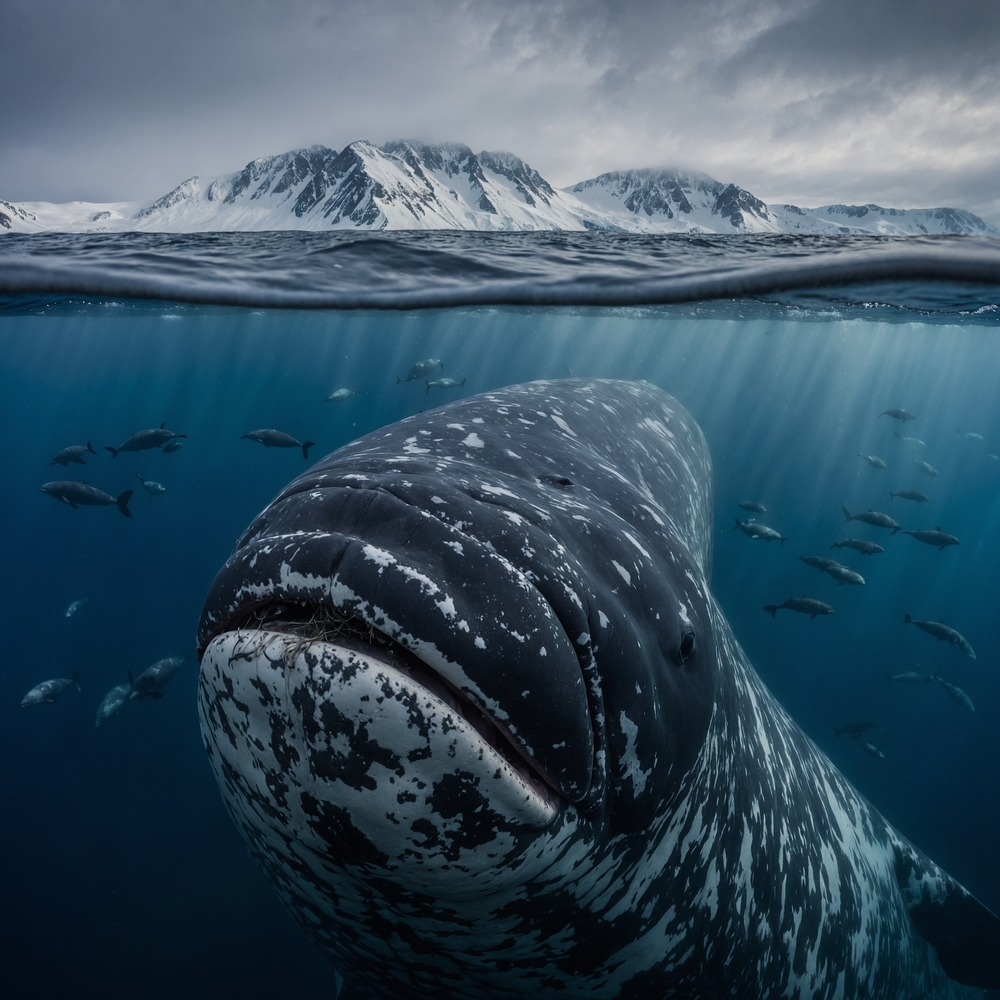
The bowhead whale is a true titan of longevity, with some individuals estimated to live over 200 years. These whales live in the icy waters of the Arctic and sub-Arctic regions, which might contribute to their long lifespans. According to Dr. John Bickham, a geneticist who studies these marine mammals, the whales’ slow metabolism and the cold environment are key factors. Bowhead whales have developed the ability to repair their DNA efficiently, which may help them avoid diseases as they age. Their long life is a testament to the wonders of adaptation and evolution in the animal kingdom.
Not only do bowhead whales live long, but they also have a fascinating social structure. They are known to travel in pods and communicate with a series of complex vocalizations, which researchers are still trying to fully understand. Their songs can be heard over long distances, echoing through the ocean depths. Despite their size, these whales are gentle giants, feeding primarily on small marine organisms like plankton. Their existence challenges our understanding of what it means to be resilient in harsh environments.
2. Aldabra Giant Tortoise
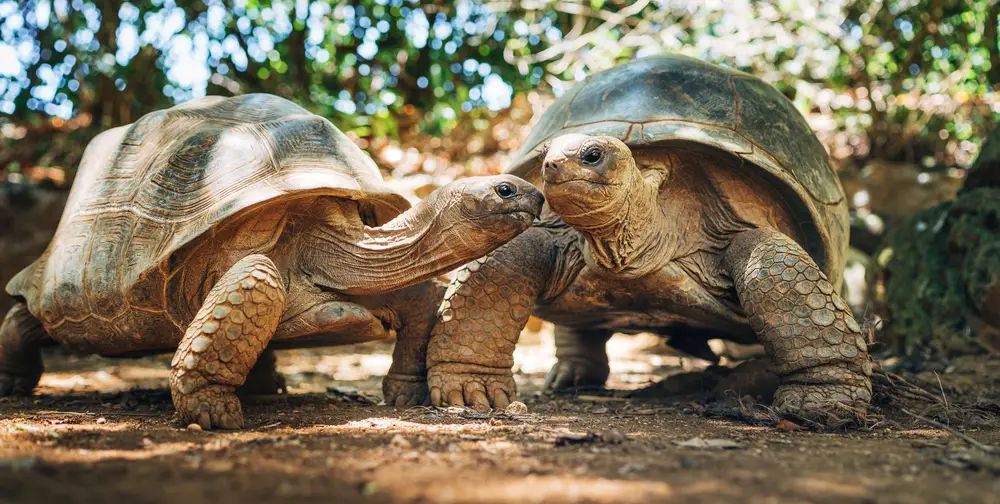
The Aldabra giant tortoise is another marvel of nature, known for its impressive lifespan that often exceeds 100 years. Native to the Aldabra Atoll in the Seychelles, these tortoises have adapted to thrive in their unique environment. Their slow metabolism and low energy requirements allow them to survive periods of food scarcity. They are herbivores, primarily feeding on grasses, leaves, and woody plant stems, which provide them with essential nutrients. These tortoises are not just ancient; they are a vital part of their ecosystem, playing a role in seed dispersal.
In addition to their ecological importance, Aldabra giant tortoises are a symbol of longevity and resilience. Their thick, domed shells offer protection from predators, while their ability to retract into these shells adds an extra layer of defense. They are social creatures, often seen in groups, which helps them maintain body heat and stay safe from threats. Observing these tortoises in their natural habitat is like stepping back in time, offering a glimpse into a world where animals grow old gracefully. Their gentle demeanor and slow-paced lifestyle remind us to appreciate the simple pleasures of life.
3. Galápagos Tortoise

Galápagos tortoises are perhaps one of the most well-known long-living animals, with some individuals surpassing 150 years. These giants roam the Galápagos Islands, where they have few natural predators. Their large size is an adaptation that allows them to store more energy and water, which is crucial for surviving in their arid habitat. The tortoises are herbivores, feeding on grasses, leaves, and fruits found on the islands. Their leisurely pace and slow metabolism contribute significantly to their ability to live such long lives.
The Galápagos tortoise is not just a symbol of longevity; it is a living testament to evolution. Charles Darwin famously studied these tortoises during his voyage on the HMS Beagle, which helped shape his theory of natural selection. Each island has its unique tortoise subspecies, adapted to its specific environment, illustrating the power of adaptation. These tortoises play an essential role in their ecosystem by dispersing seeds and maintaining vegetation. Observing them in their natural setting is a reminder of the delicate balance of nature and the intricate web of life.
4. Koi Fish
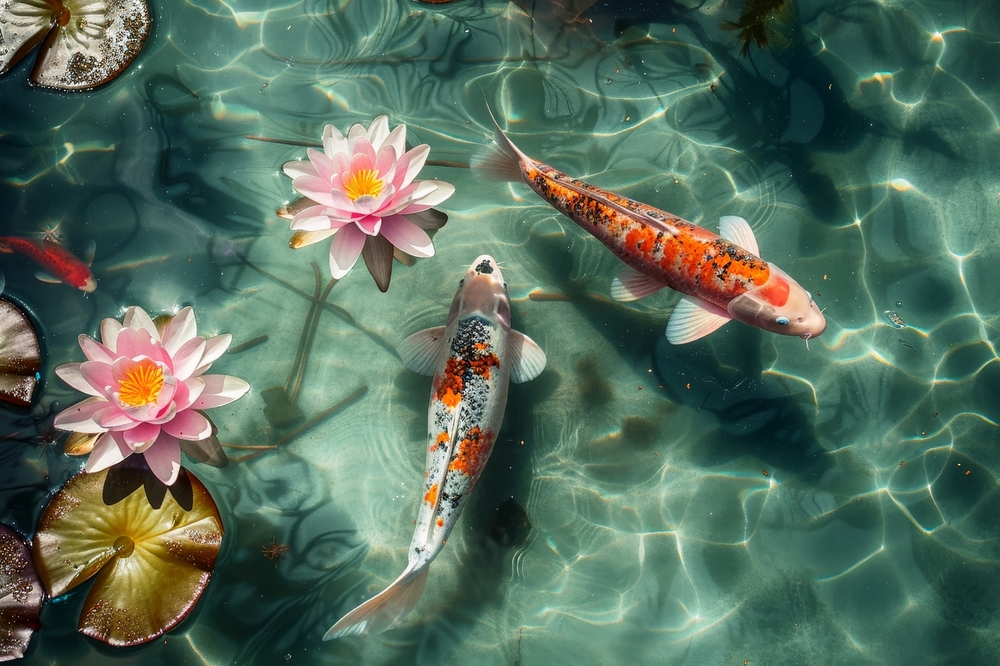
Koi fish are not only beautiful but also incredibly long-lived, with some individuals reaching over 200 years. They are bred for their stunning colors and patterns and are often kept in ornamental ponds. According to Dr. Shunji Sakamoto, a koi breeding expert, their long lifespan is largely due to careful breeding and excellent care. Providing a clean environment and a balanced diet is crucial for their longevity. The story of “Hanako,” a famous koi fish that lived to be 226 years old, showcases the potential age these fish can reach when cared for properly.
Koi fish are revered in many cultures, symbolizing luck, prosperity, and perseverance. They have a unique ability to recognize their owners and can be trained to feed from your hand, creating a bond between human and fish. Their vibrant colors and graceful movements are a delight to watch, making them popular in gardens and homes worldwide. Caring for koi requires attention to detail, including regular water changes and monitoring of water quality. These fish are a testament to the art of patience and dedication, rewarding caregivers with their beauty and long presence.
5. Red Sea Urchin
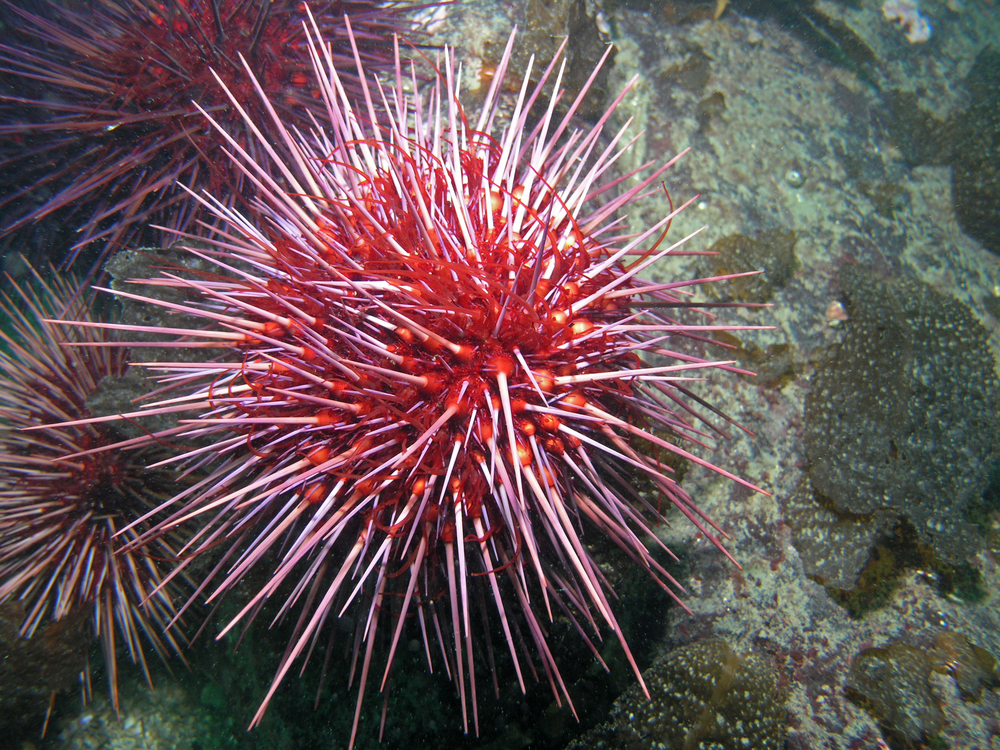
Red sea urchins are fascinating marine creatures known for their impressive age, often living over 100 years. They inhabit the rocky seabeds of the Pacific Ocean, from Alaska to Baja California. Their spiny exteriors provide a robust defense against predators, while their ability to regenerate lost spines adds to their survival capabilities. These urchins feed on algae, playing a critical role in maintaining the balance of their marine ecosystems. Their long lifespan is attributed to their slow metabolism and the relatively stable environment of the ocean floor.
Red sea urchins are more than just ancient creatures; they are also economically important. They are harvested for their roe, known as uni, a delicacy in many cuisines, particularly in Japan. Sustainable harvesting practices are essential to ensure the continued survival of these long-lived animals. Their unique reproductive strategy, which involves releasing eggs and sperm into the water for external fertilization, also contributes to their longevity. Studying these urchins provides valuable insights into ocean ecosystems and the delicate balance required for long-term survival.
6. Macaw
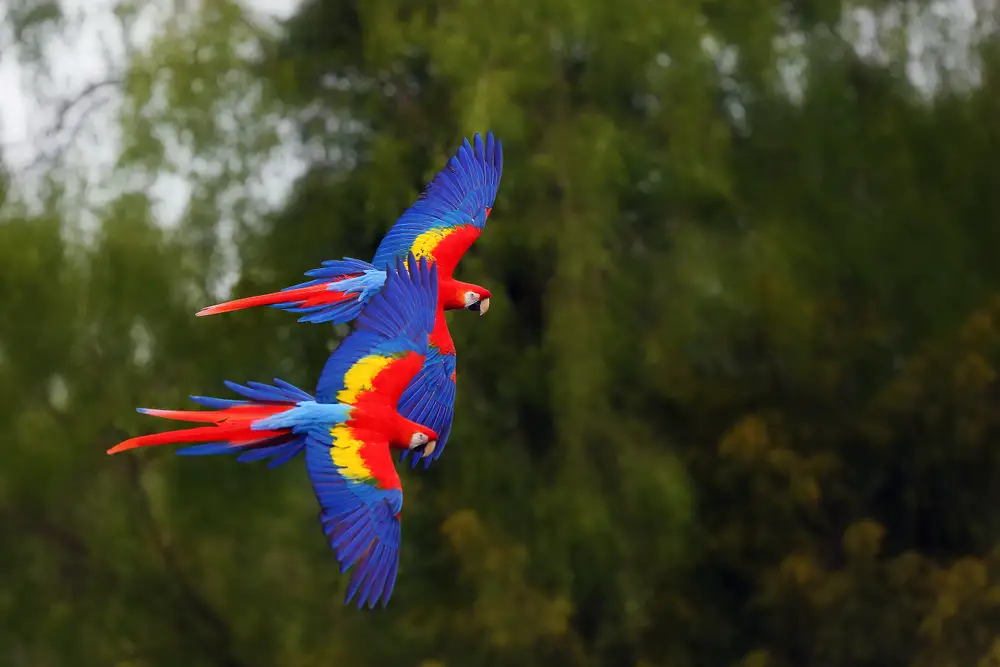
Macaws are not only known for their vibrant plumage but also for their impressive lifespans, often reaching over 100 years in captivity. These intelligent birds are native to the rainforests of Central and South America. According to ornithologist Dr. Joseph Forshaw, macaws’ social nature and strong pair bonds contribute to their longevity. In the wild, they live in large flocks and communicate using a variety of calls and gestures. Their diet, rich in nuts, seeds, and fruits, provides the necessary nutrients for a long, healthy life.
Macaws’ intelligence and ability to mimic human speech make them popular pets, but they require a lot of attention and stimulation. In captivity, they need a varied diet, mental enrichment, and an environment that mimics their natural habitat to thrive. These birds form lifelong bonds with their mates and can become very attached to their human caregivers. Protecting their natural habitats is crucial for their survival, as deforestation and illegal trapping pose significant threats. Macaws remind us of the importance of preserving biodiversity and the intricate connections within ecosystems.
7. Tuatara
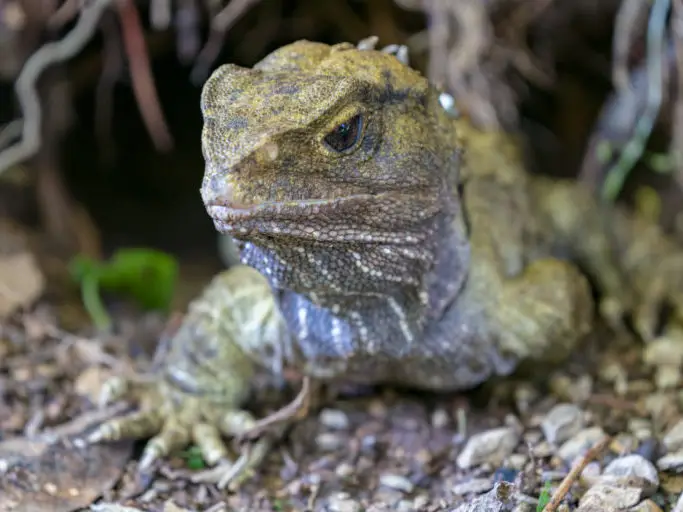
The tuatara is a unique reptile native to New Zealand, often considered a living fossil due to its ancient lineage. These creatures can live over 100 years, making them one of the longest-living reptiles. They belong to an order called Rhynchocephalia, which has been around for over 200 million years. Tuataras have a slow metabolism and can survive on a diet of insects, small lizards, and bird eggs. Their ability to regulate their body temperature and slow growth rate contributes to their impressive longevity.
Tuataras are fascinating not just for their age but also for their biological features. They possess a “third eye” on the top of their heads, which is thought to help regulate their circadian rhythms. These reptiles have a slow reproduction rate, with females laying eggs only once every four years, which further underscores their slow-paced lifestyle. Conservation efforts are crucial to protect them from predators like rats and habitat destruction. Tuataras offer a glimpse into the past, reminding us of the evolutionary history that shapes life on Earth.
8. Freshwater Pearl Mussel
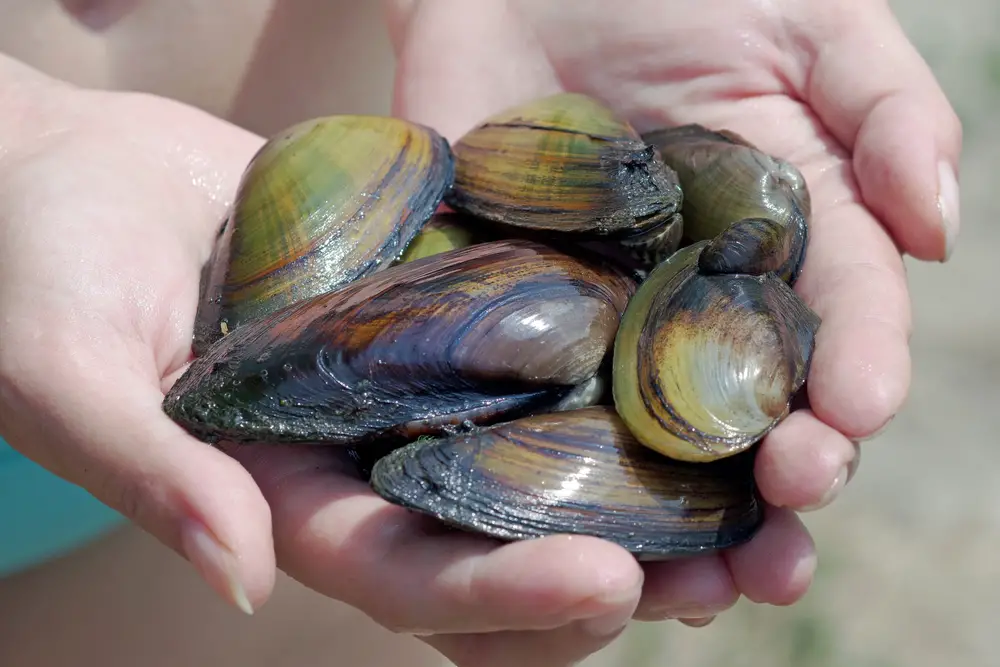
Freshwater pearl mussels are remarkable bivalves known for their extraordinary lifespan, often living over 100 years. These mussels inhabit clean, fast-flowing rivers and streams, where they play a crucial role in maintaining water quality. They filter small particles and plankton from the water, helping to keep aquatic ecosystems healthy. Their longevity is largely due to their slow metabolism and the stable conditions of their environments. Freshwater pearl mussels are also a source of natural pearls, though harvesting them can threaten their populations.
Conservation of freshwater pearl mussels is essential due to their declining numbers caused by pollution, habitat destruction, and overharvesting. They are considered a keystone species, meaning their presence supports the overall health of their ecosystem. Efforts to restore and protect their habitats are critical for their survival and the health of the rivers they inhabit. Studying these mussels offers valuable insights into freshwater ecosystems and the importance of biodiversity. Their longevity serves as a reminder of the delicate balance required to maintain thriving natural environments.
9. Orange Roughy
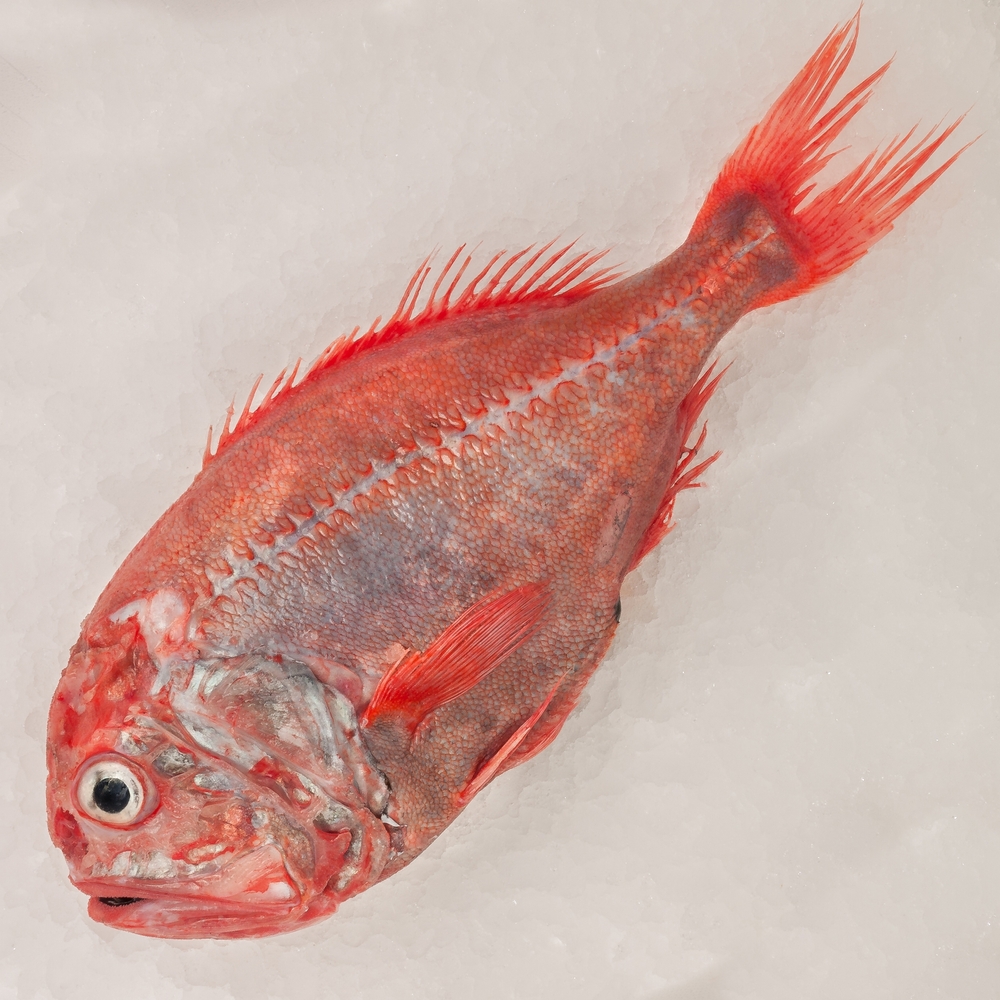
The orange roughy is a fish known for its long lifespan, often exceeding 100 years, and is commonly found in deep ocean waters around New Zealand and Australia. These fish have a slow growth rate and late maturity, taking decades to reach reproductive age. Their longevity is linked to their deep-sea habitat, where they experience stable conditions and fewer predators. Orange roughy have a diet consisting of small fish and invertebrates, and they play an important role in their marine ecosystems. Despite their resilience, they are vulnerable to overfishing due to their slow reproduction rate.
Efforts to manage orange roughy populations have been put in place, including fishing quotas and protected areas. These measures are vital to prevent overexploitation and ensure the survival of this long-lived species. The orange roughy serves as a reminder of the challenges facing marine conservation and the need for sustainable fishing practices. Understanding their biology and ecology is crucial for developing effective conservation strategies. Their longevity and vulnerability highlight the importance of balancing human demands with the preservation of marine biodiversity.
10. European Eel
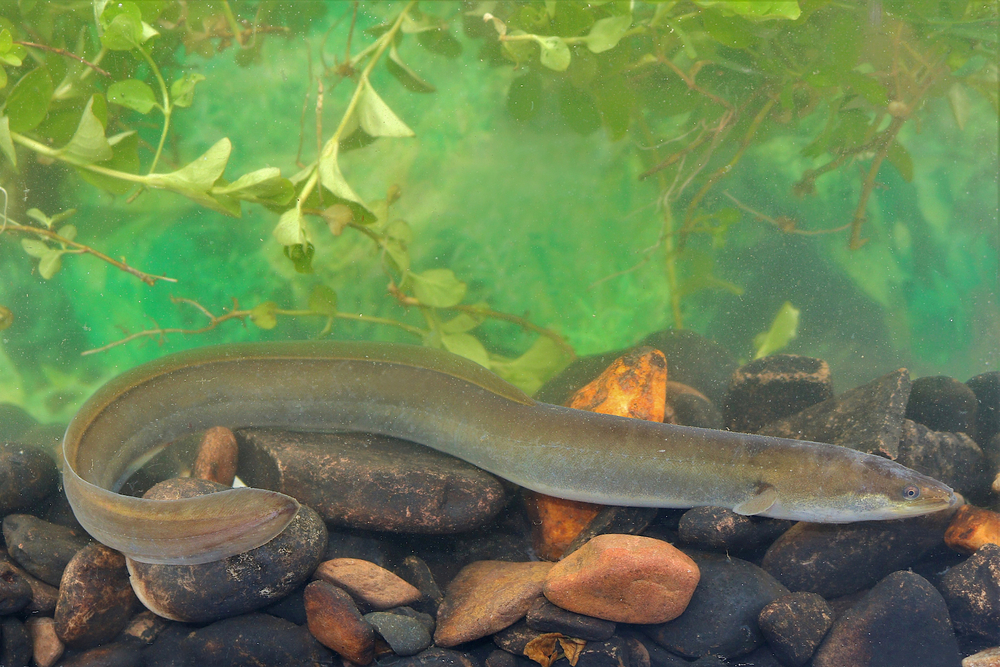
The European eel is a fascinating species known for its long lifespan, which can exceed 100 years under certain conditions. These eels have a complex life cycle, involving a long migration from their freshwater habitats in Europe to the Sargasso Sea in the Atlantic Ocean, where they spawn. Their journey and transformation from larvae to mature eels are remarkable feats of endurance and adaptability. European eels are known for their ability to survive in a wide range of environments, from rivers to estuaries and oceans. Their long lifespan is a result of their adaptability and resilience in the face of changing environmental conditions.
Conservation of European eels is essential due to their declining populations caused by overfishing, habitat loss, and barriers to migration. Efforts to protect their habitats and ensure safe migration routes are critical for their survival. Understanding their life cycle and migration patterns is vital for developing effective conservation strategies. The European eel serves as a reminder of the interconnectedness of aquatic ecosystems and the importance of protecting biodiversity. Their longevity and complex life cycle offer valuable insights into the challenges and opportunities of conservation.
11. Rougheye Rockfish
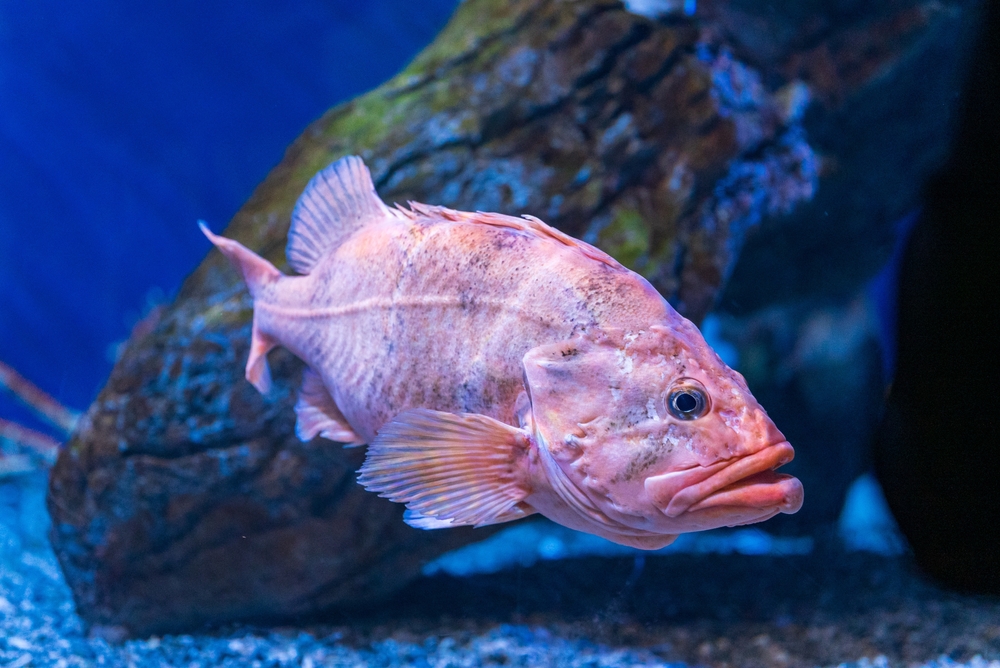
Rougheye rockfish are deep-sea fish known for their impressive lifespan, often living over 200 years. These fish inhabit the Pacific Ocean, from California to Japan, dwelling in rocky reefs and deep waters. Their slow growth rate and late maturity contribute to their longevity, allowing them to thrive in stable, deep-sea conditions. Rougheye rockfish feed on shrimp, crabs, and small fish, playing an essential role in the deep ocean food web. Despite their resilience, they face threats from overfishing and habitat degradation.
Efforts to manage rougheye rockfish populations include fishing quotas and protected marine areas. These measures are crucial to prevent overexploitation and ensure the survival of this long-lived species. The rougheye rockfish highlights the importance of sustainable fishing practices and the need to protect deep-sea ecosystems. Understanding their biology and ecology is essential for developing effective conservation strategies. Their longevity serves as a reminder of the wonders of the deep ocean and the importance of preserving marine life for future generations.
12. Lake Sturgeon
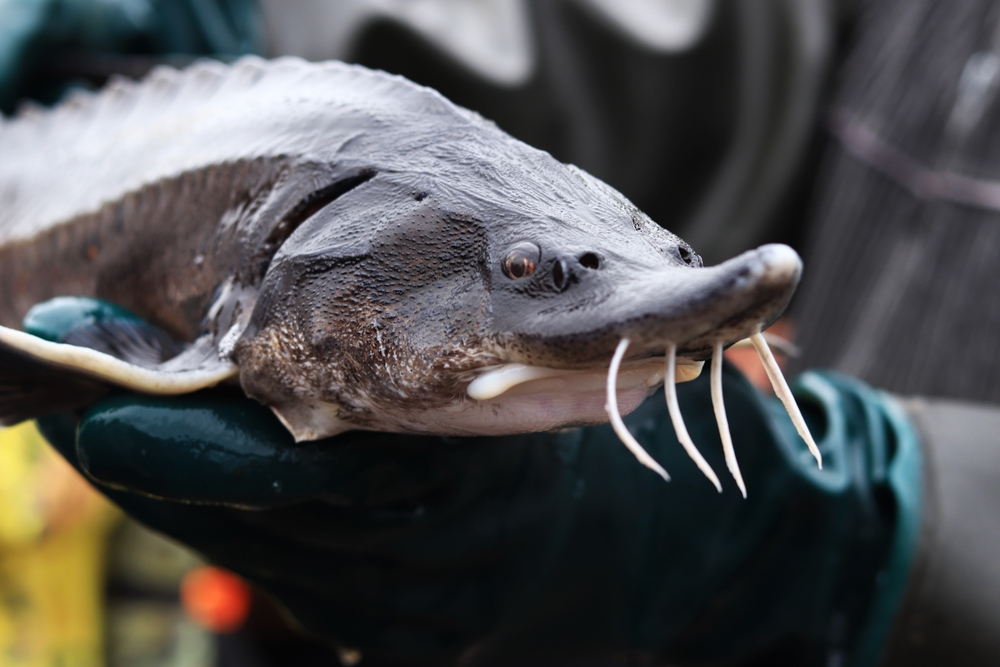
Lake sturgeon are ancient fish known for their impressive lifespan, often exceeding 150 years. These fish are native to North American freshwater systems, including the Great Lakes and the Mississippi River. Their slow growth rate and late maturity contribute to their longevity, allowing them to thrive in stable freshwater environments. Lake sturgeon are bottom feeders, consuming small fish, invertebrates, and organic matter, playing a crucial role in maintaining the health of their ecosystems. Despite their resilience, they face threats from habitat loss, pollution, and overfishing.
Conservation of lake sturgeon is essential to ensure their survival and the health of freshwater ecosystems. Efforts to restore their habitats and implement sustainable fishing practices are critical for their protection. Understanding their biology and ecology is vital for developing effective conservation strategies. The lake sturgeon serves as a reminder of the importance of preserving freshwater biodiversity and the delicate balance of aquatic ecosystems. Their longevity and resilience highlight the need for sustainable management of natural resources.
13. Tufted Puffin
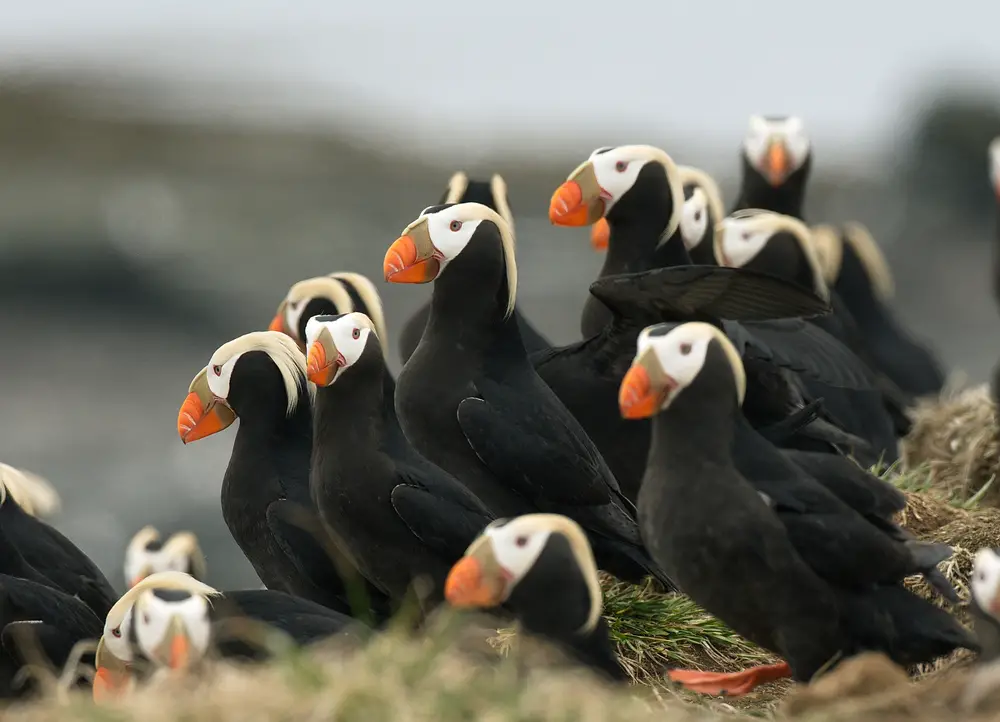
Tufted puffins are seabirds known for their striking appearance and impressive lifespan, often living over 30 years in the wild, with some individuals reaching much longer in captivity. These birds inhabit the North Pacific Ocean, breeding on coastal cliffs and islands. Their long lifespan is attributed to their ability to adapt to changing environmental conditions and their varied diet, which includes fish and invertebrates. Tufted puffins are excellent divers, using their wings to ‘fly’ underwater in pursuit of prey. Despite their resilience, they face threats from climate change, pollution, and habitat loss.
Conservation of tufted puffins is essential to ensure their survival and the health of marine ecosystems. Efforts to protect their breeding habitats and mitigate the impacts of climate change are critical for their protection. Understanding their biology and ecology is vital for developing effective conservation strategies. The tufted puffin serves as a reminder of the importance of preserving marine biodiversity and the interconnectedness of ocean ecosystems. Their longevity and adaptability highlight the need for sustainable management of natural resources.
